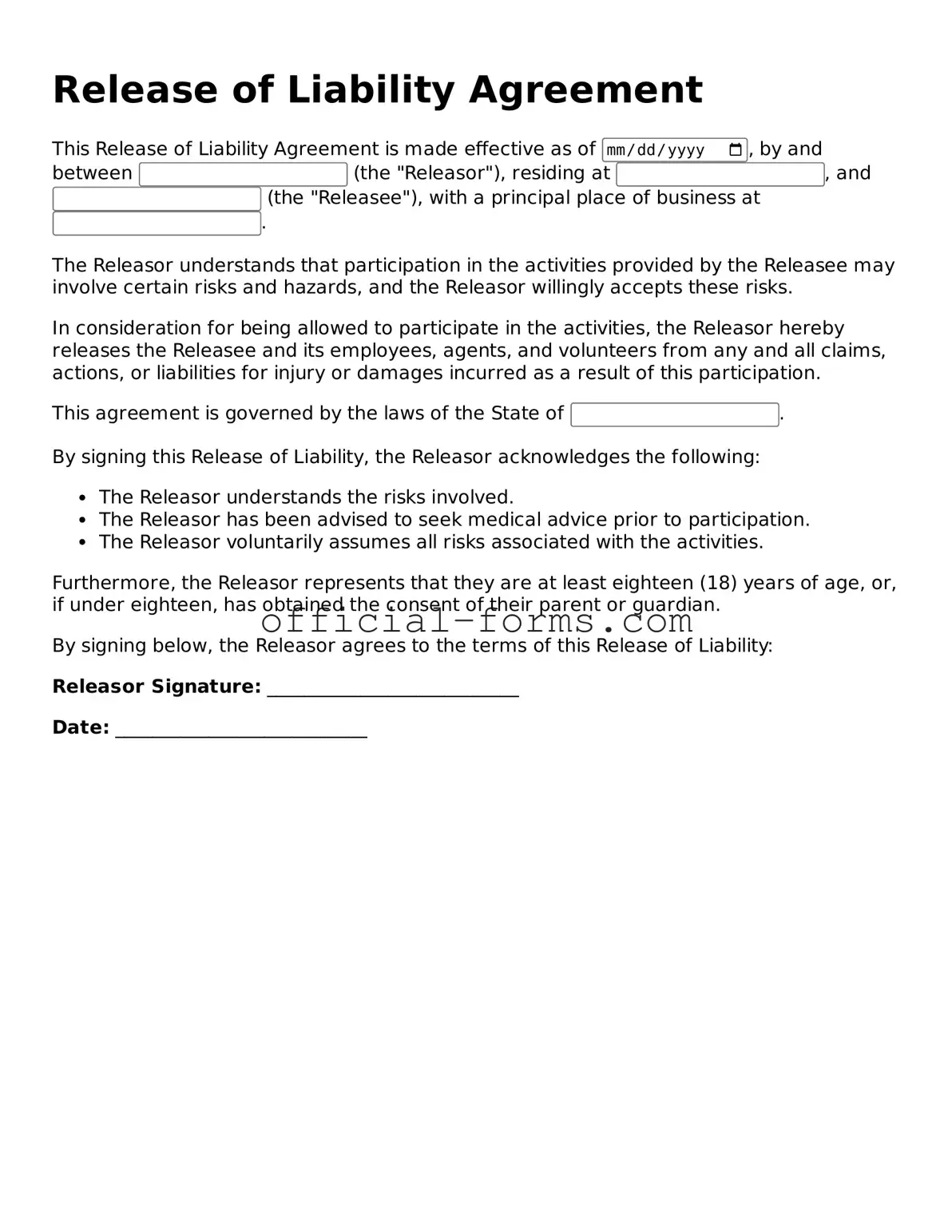Filling out a Release of Liability form can be straightforward, but many individuals make common mistakes that could lead to complications later. One significant error is failing to read the entire document carefully. People often skim through the text, missing important details that explain their rights and responsibilities. Understanding the implications of the release is crucial for making an informed decision.
Another frequent mistake is not providing complete information. Individuals sometimes leave out essential details such as their full name, contact information, or the date of the event. Incomplete forms can create confusion and may render the release invalid. It is vital to ensure that all required fields are filled out accurately.
Many people also overlook the importance of signing the form. Some assume that simply filling it out is sufficient, but without a signature, the document holds no legal weight. Additionally, forgetting to date the form can lead to disputes regarding when the release was executed, which can complicate matters if an issue arises later.
Some individuals fail to understand the scope of the release. They may not realize that by signing, they are waiving certain rights. It is essential to comprehend what is being released and the potential risks involved. A lack of clarity can lead to misunderstandings about what the release covers.
Another mistake is not seeking clarification on ambiguous terms. If any part of the form is unclear, individuals should ask questions before signing. Ignoring confusing language can lead to misinterpretation and unintended consequences. It is better to seek understanding than to assume.
People often neglect to consult legal advice when necessary. While it may seem unnecessary for some, obtaining guidance can provide valuable insight. This step is particularly important for those dealing with significant risks or complex situations. Legal advice can help ensure that the release aligns with personal interests.
Lastly, individuals may not keep a copy of the signed form. After signing, it is crucial to retain a copy for personal records. This document serves as proof of the agreement and can be vital if any disputes arise in the future. Keeping a record ensures that individuals have access to the terms they agreed to.
